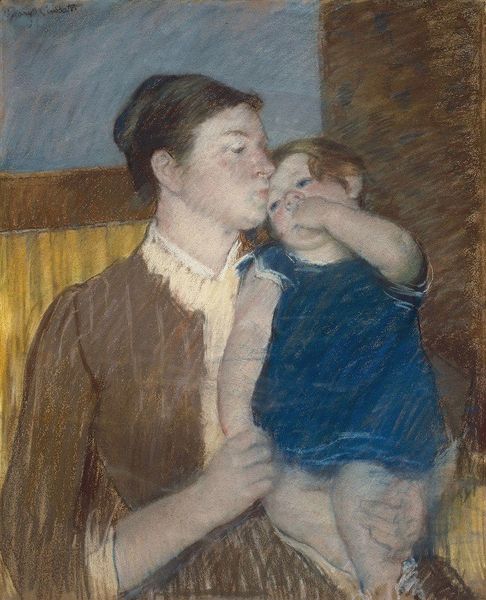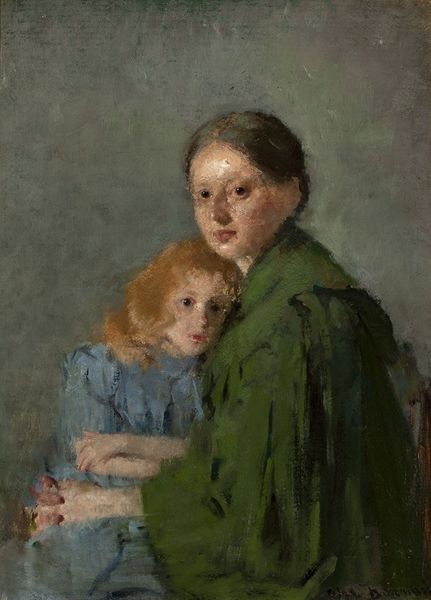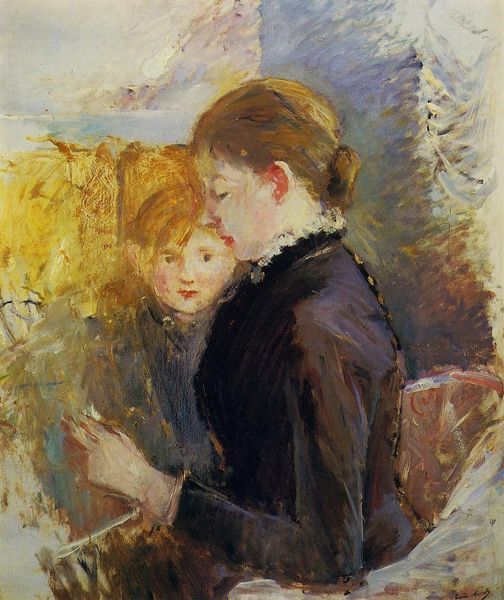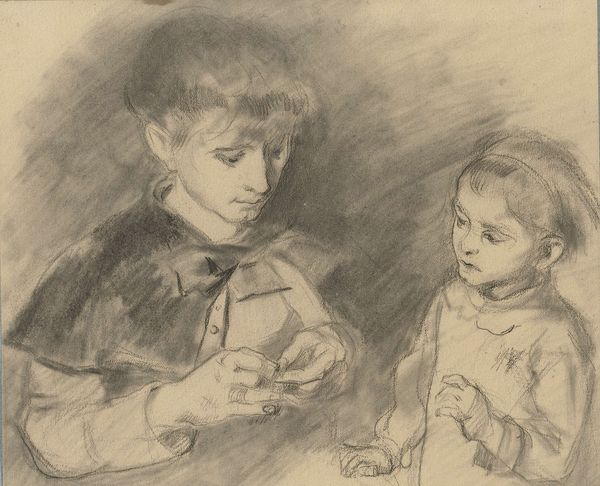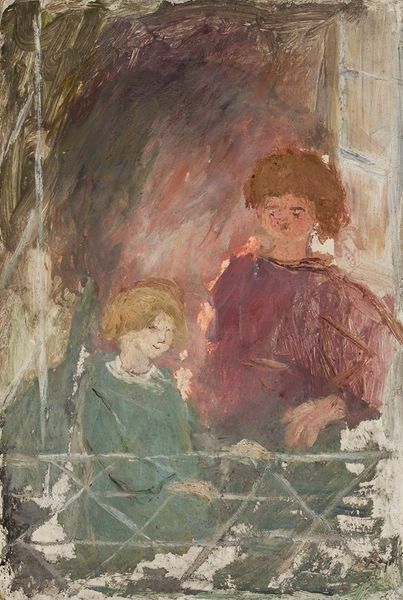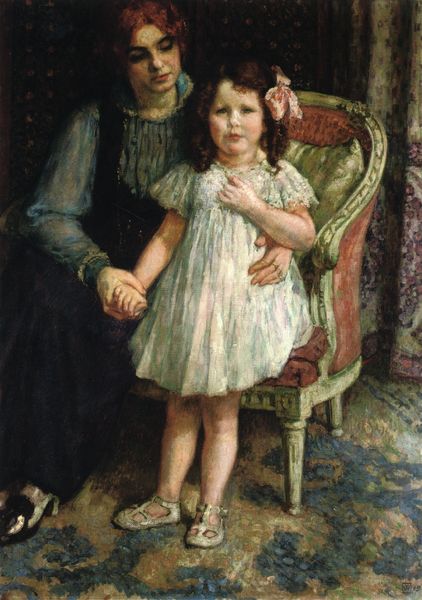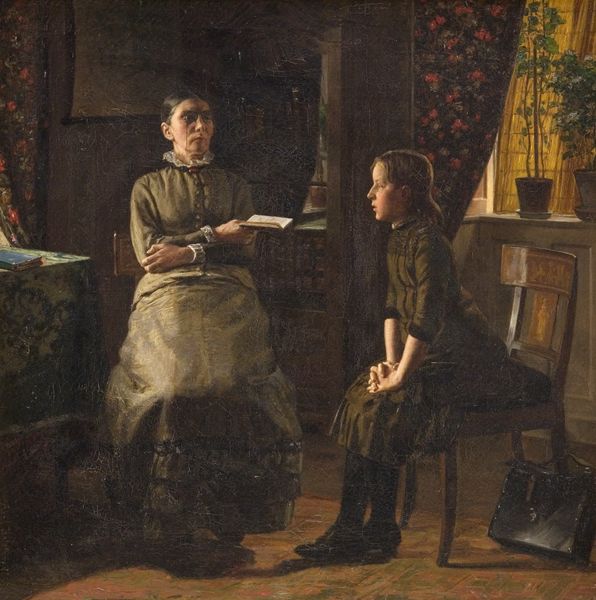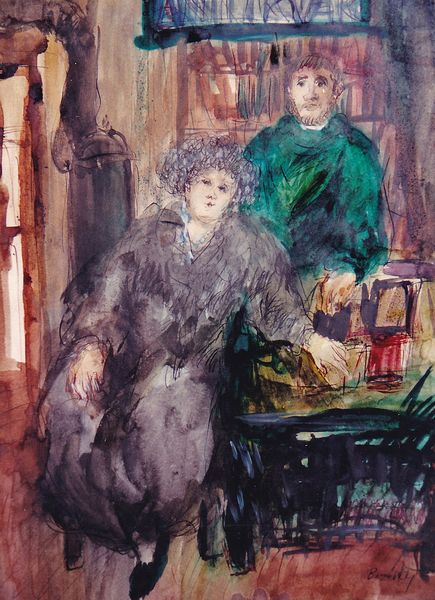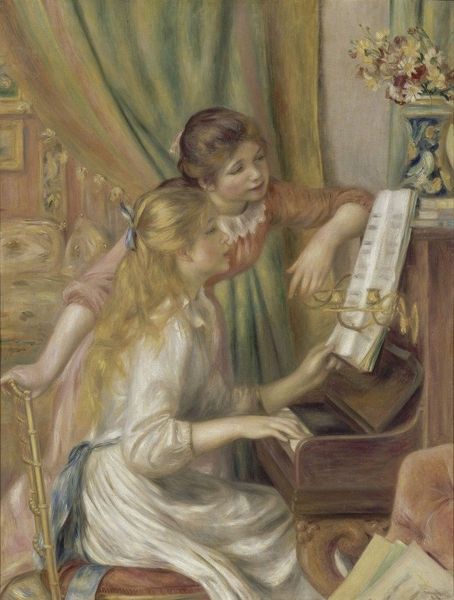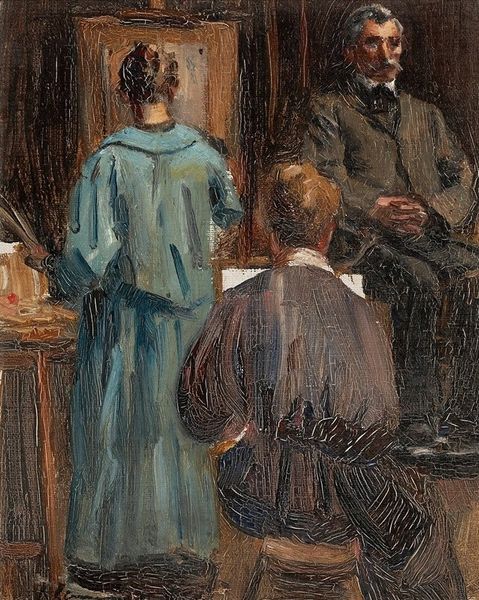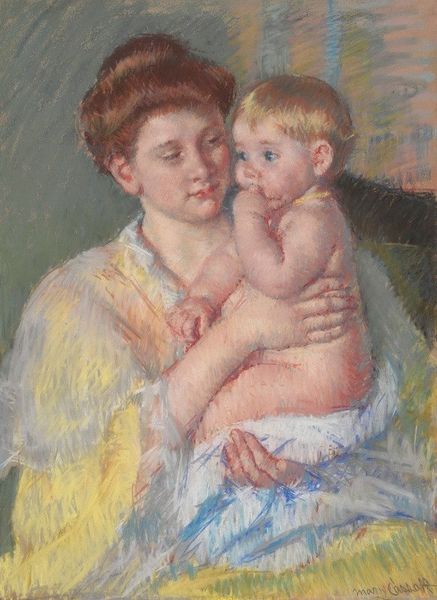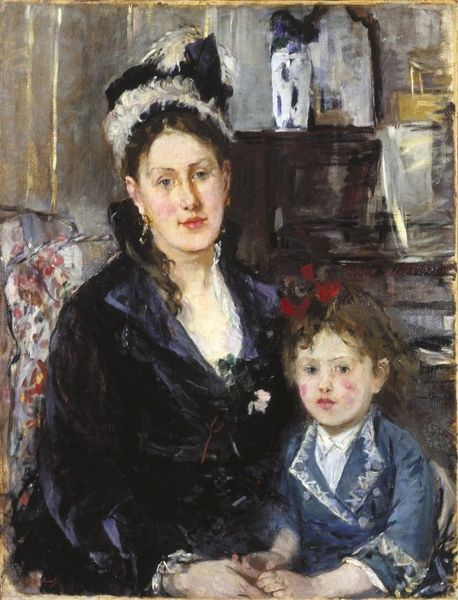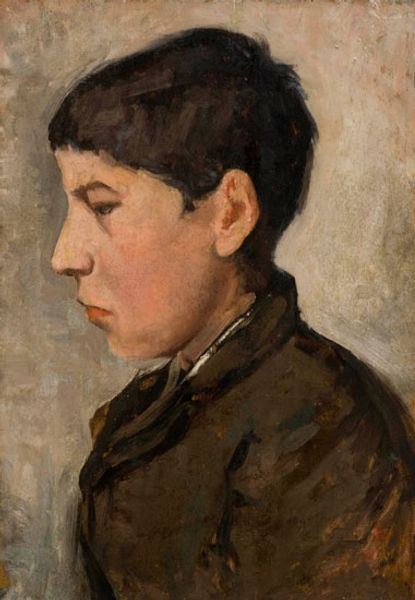
oil-paint, impasto
#
portrait
#
figurative
#
canvas painting
#
oil-paint
#
oil painting
#
impasto
#
group-portraits
#
portrait art
#
modernism
Copyright: Public Domain: Artvee
Curator: What strikes me immediately is the slightly melancholic air about this portrait. The boy so focused on his book, the mother's gaze almost… resigned? Editor: I concur about the tone. Before we delve into that, though, let’s first properly introduce this work by Magnus Enckell, created in 1916. The piece is titled "Mrs. Esther Cederhvarf with Her Son," executed in oil paint on canvas, featuring what appears to be a rather intimate scene. Curator: Intimate, yes, but with a certain detachment. The book the boy is engrossed in, that barrier of knowledge and imagination—it sets up a whole world between them, doesn’t it? Perhaps representing the burgeoning independence, maybe a shared longing. Editor: I'm drawn to the artist’s use of impasto, the thick layering of paint that gives texture and a tactile quality to the figures and fabrics. See how Enckell renders the dress of Mrs. Cederhvarf; it emphasizes the materiality, making her presence weighty, substantial, almost earthbound. Curator: Indeed. The very earthbound mother watching the airy flight of her son's mind. And notice the colours— muted, almost autumnal palette speaks of fading light, quiet strength and a bit nostalgia. All this visual and textual elements coming together creates this poignant narrative about growth, distance, a universal theme perhaps. Editor: Absolutely, these choices certainly serve the composition as well as underscore its emotional subtext, the contrast of vibrant detail with subdued tonal ranges and form with line. Did Enckell consider carefully the construction between a modern and familiar theme of intimacy versus objectivity when creating the portrait? Curator: Perhaps it's about accepting the inevitability of change. As a mother she understands, perhaps, how that closeness evolves through time, or shifts forms. Look at that patterned material in the background, too, it might signal family memories and passed-down histories they are apart and together sharing, too. Editor: Well, looking closely at Enckell's approach, one sees an interest in the construction of both subject and artistic composition, how technique itself helps convey a feeling—but I also agree that symbolic weight imbues the domestic scene here in this particular way. Curator: I leave today contemplating how the past, present, and future mix, right on this singular, layered canvas. Editor: Indeed. And how form serves feeling and creates lasting memory.
Comments
No comments
Be the first to comment and join the conversation on the ultimate creative platform.
